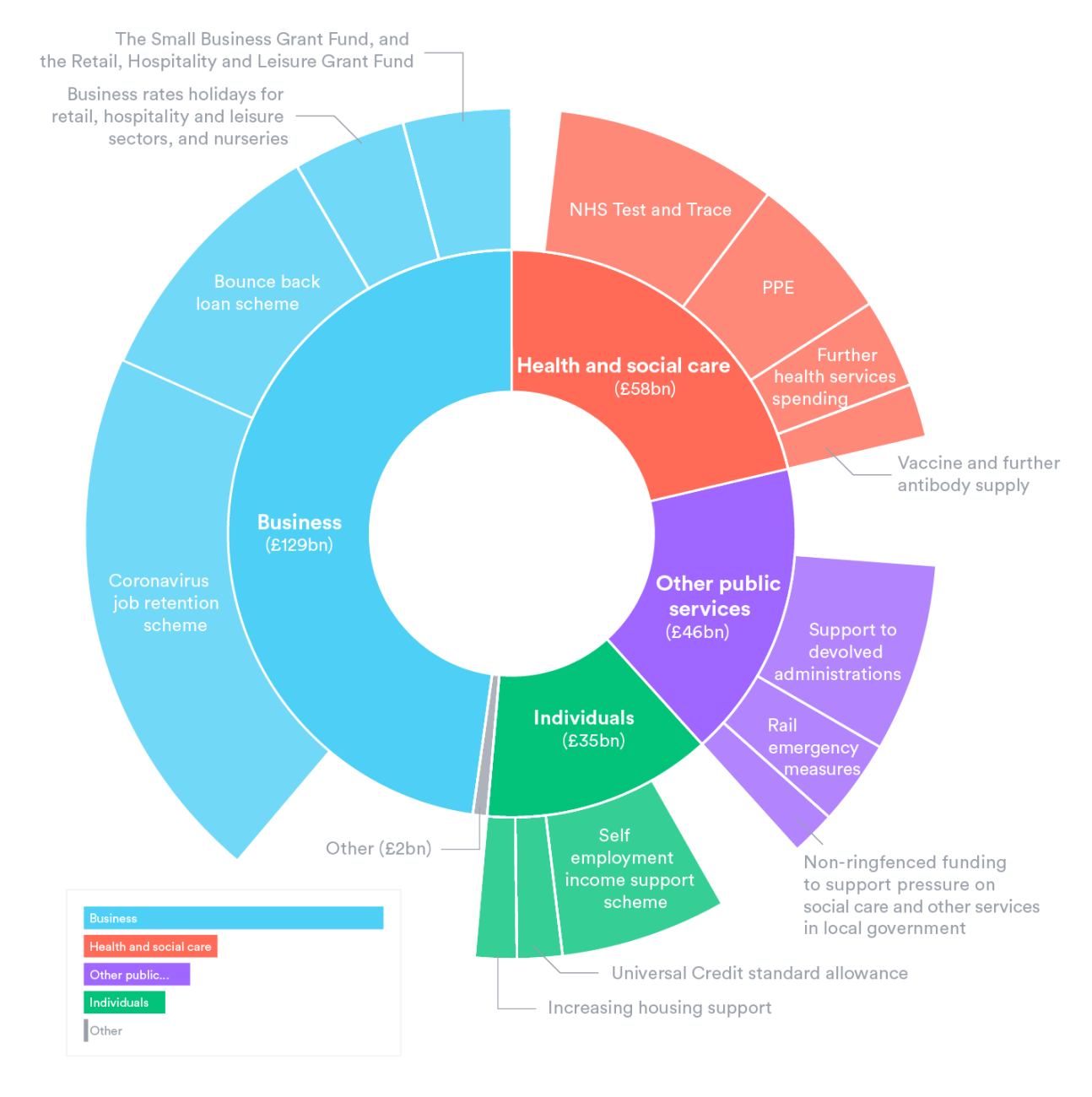Responding to the pandemic has come at a huge financial cost, as we have highlighted previously. The full extent of the financial impact will not be known for some time, but data compiled by the government spending watchdog, the National Audit Office, does allow us to put into perspective the known costs to date and the expected future costs, which together make up the lifetime cost.
The known estimated lifetime central government costs for new programmes resulting from Covid-19, as at January 2021, were over a quarter of a trillion pounds (£271 billion). This is equivalent to £9,700 per household. Around two-fifths (£116 billion) of this expected central government cost is known to have been spent so far. It is important to note that government has not provided an estimated cost for many schemes, including support to universities at risk of insolvency and to local authorities for lost income. These vast estimates also do not include the costs covered by existing budgets, such as for much of the NHS care received by patients admitted with Covid.
Only a fifth of lifetime costs for these new programmes support health and social care – primarily the NHS Test and Trace programme, PPE, vaccine supply and further spending on health services. This latter cost covers a range of actions and services, including the use of independent sector health facilities and keeping pharmacies and GP practices open during bank holidays. This further spending is, in fact, set to expand with the announcement on 18 March of a £7 billion package for health and care services to support the next phase of the NHS response to Covid-19.
Nearly half of the funding is on support for businesses, with the largest individual programme cost being the Job Retention Scheme (£55 billion). The costs include estimates for write-offs for some government-backed loans and finance schemes, including some £27 billion expected write-offs for the Bounce Back Loan Scheme for businesses.
Whether or not the health and care system succeeds in obtaining further increases in funding, it is clear that the direct care costs will be dwarfed by the costs of wider economic support.


